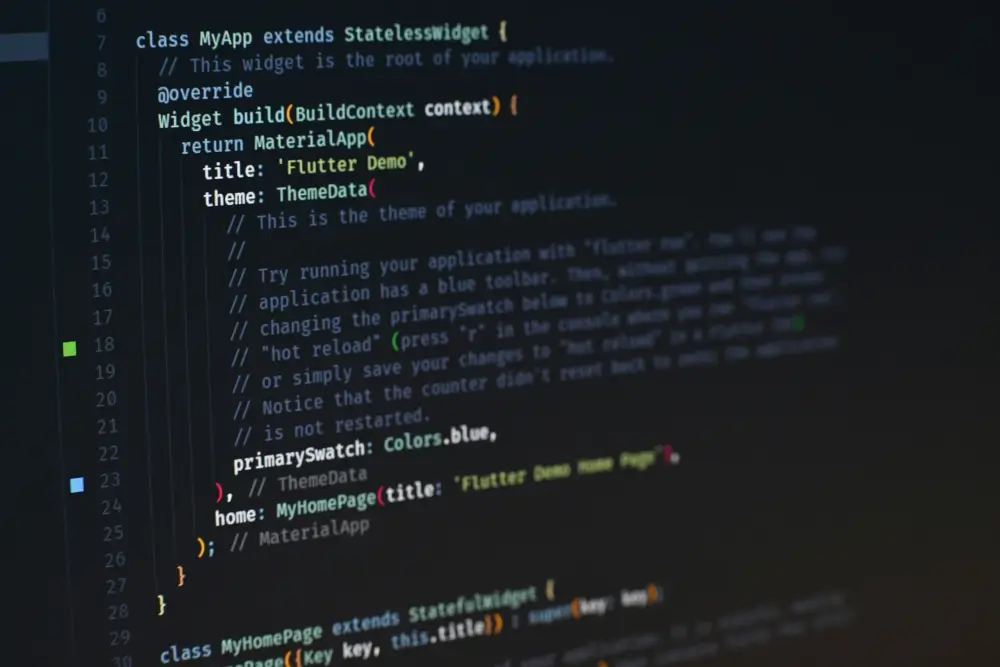Migrating an application from one platform to another can be a daunting task, especially when it involves a complex and feature-rich app like an Ionic mobile application. However, as technology evolves, it is crucial for businesses to keep up with the latest trends and updates to stay competitive in the market. This was the case for one of our clients who approached us to migrate their existing Ionic app to Flutter.
Flutter is an open-source mobile application development framework created by Google, which has gained immense popularity in recent years due to its fast development, cross-platform compatibility, and attractive user interface. Our client wanted to leverage these benefits and enhance their app’s performance and user experience by migrating it to Flutter. In this blog post, we will discuss our experience of migrating an Ionic app to Flutter for our client and the challenges we faced during the process.
The Challenge
Our client had an Ionic app that had served them well for a while. However, technology evolves, user expectations rise, and challenges arise. They faced several issues with their existing app, including performance bottlenecks, limitations in achieving a truly native feel, and the need to align with the latest mobile trends.
The Solution
- Discovery and Planning: Our initial step was an in-depth discovery phase. Understanding the client’s objectives, user expectations, and technical requirements was paramount. Collaboratively, we set clear migration objectives to ensure the project’s success.
- Agile Methodology: Given our expertise in Flutter, we chose an agile approach, allowing for flexibility and adaptability throughout the migration process. Agile methodology facilitated rapid iterations, real-time feedback, and client involvement at every stage.
- Choosing Flutter: Leveraging our expertise and recognizing Flutter’s prowess, we recommended migrating the app to Flutter for its superior performance, native-like UI capabilities, and efficient cross-platform development.
- Codebase Analysis: Our seasoned team meticulously analyzed the existing Ionic codebase. This comprehensive analysis identified reusable components, data structures, and functionalities, forming the foundation for a smooth migration.
- Parallel Development: Instead of rewriting the entire app from scratch, we implemented a parallel development strategy. This approach allowed us to gradually introduce Flutter components while the Ionic app remained fully functional.
- Performance Optimization: A primary concern was performance. Leveraging Flutter’s direct access to native APIs and optimized rendering, we significantly enhanced the app’s speed, making animations smoother and overall responsiveness superior.
- Native-Like UI: Our expertise in Flutter came into play as we harnessed the platform’s extensive widget library to craft a native-like user interface. The app’s look and feel became consistent across iOS and Android, delivering a polished user experience.
- Continuous Testing: In keeping with our agile approach, continuous integration and testing played a vital role. Regular testing ensured prompt issue identification and resolution, guaranteeing a bug-free experience.
- Client Collaboration: Agile methodology encouraged ongoing collaboration with the client. Their active involvement throughout the development process allowed for real-time feedback and insights, which we incorporated promptly.
- Gradual Rollout: Rather than rushing the migration, we adopted a gradual rollout approach. Incremental releases ensured each version was stable, met client expectations, and delivered an exceptional user experience.
The first challenge we encountered was understanding the existing codebase of the Ionic app. Given our pre-existing proficiency in Flutter, the fact that Flutter utilizes the Dart programming language and boasts a distinct architecture compared to Ionic’s Angular framework posed a challenge. We also had to carefully analyze the features and functionality of the app to identify any potential roadblocks that could arise during the migration process.
After analyzing the codebase, we created a detailed plan and timeline for the migration. We decided to follow an incremental approach, where we would first migrate the core features of the app and then gradually add the remaining features. This helped us in managing the project efficiently and minimized the risk of any major issues arising during the migration.
One of the significant advantages of migrating to Flutter was its hot reload feature, which allowed us to see the changes in real-time, making the development process faster and more efficient. Additionally, Flutter’s widget-based architecture helped us in building a responsive and visually appealing user interface for the app. We were also able to integrate third-party plugins and libraries easily, which further enhanced the app’s functionality.
However, we did face a few challenges during the migration process. As Flutter is relatively new, there was a learning curve for our team, and we had to invest time and effort in understanding its features and best practices. We also faced some compatibility issues while integrating certain plugins and had to find alternative solutions to overcome them.
In the end, the migration was successful, and our client was pleased with the results. The app’s performance improved significantly, and the user experience was enhanced, which led to an increase in user engagement and positive reviews. The table below summarizes the key points of our experience in migrating the Ionic app to Flutter for our client.
| Aspect | Flutter | Ionic |
|---|---|---|
| Performance | Compiles native code for superior performance | Uses web technology with optimization potential |
| Learning Curve | Steeper due to Dart language and new framework | Easier for web developers with HTML, CSS, JS |
| UI Customization and Flexibility | Declarative UI, powerful for complex UIs | HTML, CSS, JS provide flexibility |
| Native Access and Plugin Ecosystem | Direct access to native APIs | Access via plugins, varied performance |
| Cross-Platform Development | Single codebase for iOS and Android | Cross-platform, but relies on web views |
| Enhanced Performance | Smooth animations and responsive UI | May face performance issues, especially complex animations |
| Hot Reload | Instantly see code changes in the app | Similar feature but may be less reliable and slower |
| Native-Like UI | Create native-like interfaces | May have challenges achieving consistent native feel |
| Growing Community and Ecosystem | Rapidly expanding community and Google’s support | Community and ecosystem not as mature |
In conclusion, migrating an Ionic app to Flutter was a challenging yet rewarding experience for our team. It allowed us to explore a new technology and help our client in achieving their goal of improving their app’s performance and user experience. As technology continues to evolve, it is essential for businesses to adapt and stay ahead of the curve. Migrating to Flutter is a step in the right direction for any business looking to enhance their mobile app’s capabilities.
WE ARE HERE TO HELP
Thinking about migrating your app?
Talk to a SAYGE expert and find out if migrating to Flutter fits your needs.







